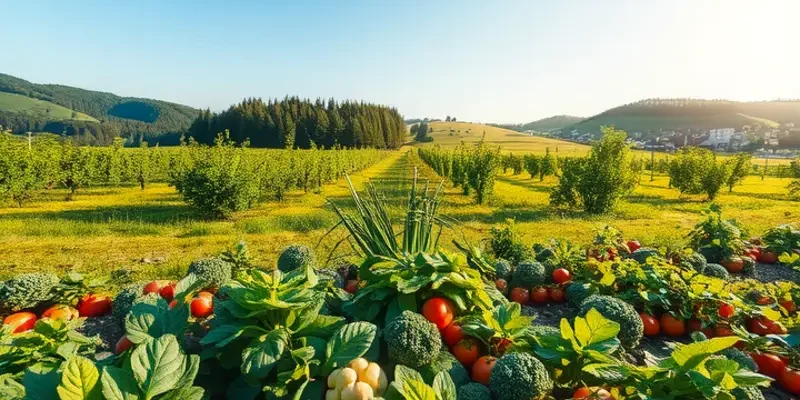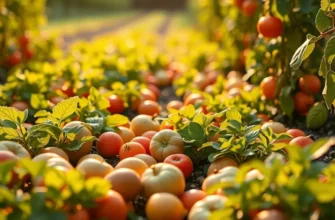The impact of freezing on the nutrient content of food is a common concern. Many people wonder if freezing fruits and vegetables destroys vitamins and minerals, leading to questions about the best ways to preserve food. Understanding how freezing affects nutritional value can help make informed choices about meal prepping and food storage.
Understanding Vitamin Stability During Freezing

Freezing is a marvel in the realm of food preservation, hailed for its ability to retain the flavor, texture, and nutrients of fresh produce. However, questions often arise concerning the stability of essential vitamins during this process. Understanding how various vitamins fare in the face of freezing involves examining the fundamental differences between water-soluble and fat-soluble vitamins.
Water-soluble vitamins, including the B-complex group and vitamin C, are particularly sensitive to temperature fluctuations. The freezing process, when executed correctly, can limit the degradation of these nutrients, safeguarding their presence within the food matrix. During freezing, enzyme activity slows dramatically, diminishing the breakdown of these delicate vitamins. Yet, water-soluble vitamins can sometimes be leached out if the food’s cellular structure is compromised, such as in fruits and vegetables that undergo significant structural changes when frozen and thawed.
Conversely, fat-soluble vitamins like A, D, E, and K exhibit greater stability under freezing conditions. These vitamins reside within the lipids of food and are less prone to loss during freezing. The fat-soluble vitamins’ hydrophobic nature protects them from water-based degradation pathways, making them more resilient when stored in frozen forms.
An essential aspect of understanding nutrient retention during freezing lies in the timing and technique of the process. Rapid freezing techniques, often used in commercial contexts, minimize vitamin loss by causing smaller ice crystal formation. This technique prevents cell rupture, effectively trapping vitamins within the food. Home freezing methods can also be effective; blanching vegetables before freezing is a recommended practice to inactivate enzymes that can degrade nutrients over time.
Moreover, packaging plays a crucial role in preserving vitamin content. Vacuum sealing limits exposure to oxygen, a known antagonist in vitamin degradation, particularly for vitamin C and some B vitamins. Oxygen-permeable packaging can otherwise allow oxidative reactions that accelerate nutrient loss, even in frozen states.
The interactions between freezing, storage duration, and the initial quality of food are also significant. While freezing slows down the degradation, it doesn’t halt it entirely. Extended storage periods, even in an ideal frozen state, can result in progressive nutrient loss. Regular rotation and mindful inventory management can maintain high nutrient levels, aligning with broader food storage and waste reduction strategies.
For a comprehensive understanding of safe storage methods, consider exploring the insights on safer storage practices for various food items to enhance both nutrient retention and food safety post-freezing. By combining these strategies, we can maximize the nutritional value of our frozen foods, safeguarding their essential vitamins for a healthful diet.
Maximizing Nutritional Benefits of Frozen Foods

When aiming to retain the vitamins in frozen foods, starting with appropriate pre-freezing preparation is key. One effective tip is blanching vegetables before freezing. This process involves briefly boiling produce and then plunging it into cold water. Blanching is essential for preserving color, flavor, and nutritional value. It inactivates enzymes that can lead to spoilage and nutrient loss over time.
For fruits, a different approach works best. Adding a bit of lemon juice to fruits like apples or pears prior to freezing helps prevent oxidation, which can degrade vitamin content. Freezing fruits quickly and at the right stage of ripeness ensures optimal nutrient retention.
Storage techniques significantly impact the nutritional quality. Airtight containers or vacuum-sealed bags are crucial for minimizing exposure to air and moisture. Oxygen can cause freezer burn and loss of vitamins, notably vitamin C. Flattening these bags before placing them in the freezer optimizes space and ensures faster and more efficient freezing.
Labeling the food packages with the date is a simple yet effective strategy. This practice allows for timely consumption and prevents long-term storage, which could lead to nutrient degradation. An organized freezer, where older items are brought to the front, can expedite the ‘first in, first out’ process.
The thawing process should not be overlooked, as it can affect the vitamin content. Slow thawing in the refrigerator is recommended to prevent the growth of bacteria while preserving nutritional integrity. Microwave defrosting, although convenient, can lead to uneven heating and potential vitamin losses. If time is a constraint, consider placing sealed bags in cold water to speed up thawing without sacrificing nutrient quality.
For those interested in sustainable and eco-friendly kitchen practices, consider reading more on eco-smart kitchen storage to further enhance your food preservation methods.
Defrosted foods should be consumed promptly. Repeated refreezing and thawing cycles can drastically reduce nutrient levels. Cooking such foods with minimal water and steam instead of boiling them can help retain their vitamins because water-soluble vitamins, like those in the B group, are often lost through excessive liquid. Keeping cooked portions small and conserving cooking juices enhances nutrient retention.
Incorporating these practices does more than maintain vitamin levels. They elevate the quality and flavor of your meals, ensuring every effort contributes to both taste and health. By carefully managing your freezing methods and storage, you unlock the full potential of your ingredients, keeping them vibrant and beneficial.
Final words
Freezing food does not inherently destroy vitamins, although some nutrient loss can occur, particularly with water-soluble vitamins like Vitamin C and some B vitamins. However, the benefits of maintaining the quality and safety of food can outweigh these losses. To maximize the nutritional value of frozen foods, it is essential to use proper techniques for freezing and storage. Focus on selecting high-quality, fresh produce and consider freezing quickly after harvest, as this helps lock in nutrients. With correct methods, frozen foods can remain a valuable part of a healthy diet.








